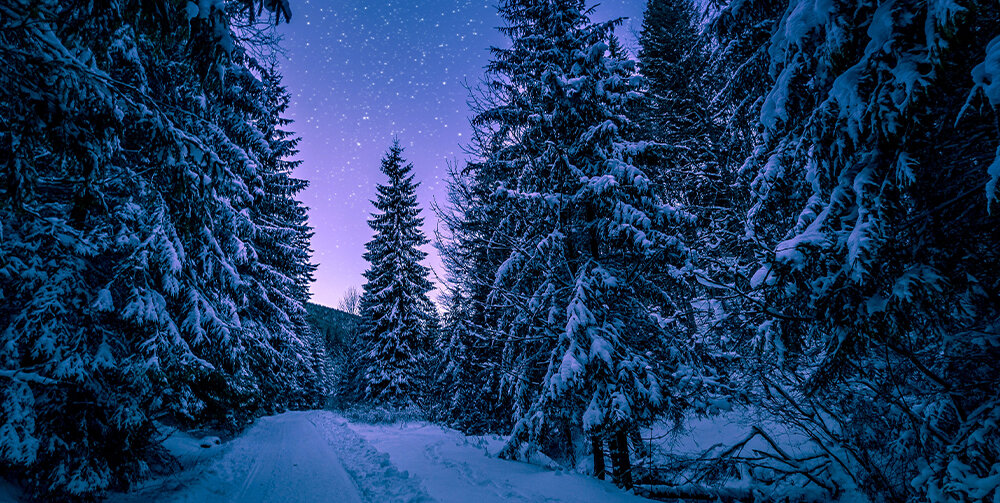Celestial Celebrations: Winter Solstice and the Great Conjunction
Celestial Celebrations: Winter Solstice and the Great Conjunction
Written by Kristine Manganelli (Somerset County 4-H Coordinator)
The snowfall here in New Jersey really makes it feel and look like winter! The frigid temperatures and white landscape came just in time for the official first day of the season on Monday, December 21 –the winter solstice. Moving through these dark days, I find myself reflecting on light. During the holiday season many people light candles or hang lights. Adding light to our darkest days offers comfort and hope as we move through the less pleasant parts of the season.
Each day from now until Monday, we will lose a sliver of daylight until we’ve reached the shortest day of the entire year. On the winter solstice, the northern hemisphere will be tilted as far away from the sun as it will be all year, causing less sunlight to reach this part of the world. But the good news is, from then on, we will gain a little light back every day until the summer solstice in June –the longest day of the year!
To illustrate, as the sun rises in the east its path creates an arc across the sky as it moves to set in the west. The height of the arc changes throughout the year depending on where the earth is located on its orbit around the sun as well as the tilt of the earth’s axis. During the days surrounding the winter solstice, the sun appears at its lowest point on the horizon, and seems to rise and set in the same place, earning its Latin name solstice translating to “sun stands still.”
The winter solstice marks the moment when the sun’s path reaches the most southerly point in the sky. From there, the sun begins its path northward until the summer solstice, and then back south until winter in a never ending celestial cycle.
To make December even more festive, the planets Jupiter and Saturn will appear to almost “touch” in the night sky in an event known known as a great conjunction. Conjunctions occur when planets pass each other on their orbital paths around the sun. The moment of closest approach happens to be on the solstice, December 21.
All planets in our solar system revolve around the sun. The length of a planet’s year is determined by their distance from the sun. One full revolution around the sun, or 1 year on earth lasts 365 days. As Jupiter and Saturn are much farther away in space, 1 orbit around the sun, or 1 year on Jupiter is 12 earth years; 1 year on Saturn is 30 earth years. This timeframe allows the planets to pass closely by each other on their separate orbits about every 20 years. Picture cars passing each other on the lanes of a giant, circular racetrack with the sun in the center.
However, these planets have not been this close together in almost 400 years. Even then, people on earth would not have been able to see the conjunction because of its position in relation to the sun that year. You’d have to go back 800 years to a time when it was visible in a similar way from earth. Conjunctions happen between other planets like Mercury and Venus, but are more common, happening many times per decade.
Jupiter and Saturn are the most distant planets bright enough to be seen with the naked eye. They look similar to the way stars or balls of light, however, you can distinguish planets from stars because planets do not twinkle. Each night Jupiter and Saturn will move closer and closer together until they appear only 1/10th of a degree apart from our perspective on earth. In reality the planets will be hundreds of millions of miles apart in space.
Get Outside
A.M. solstice activity: If we get a sunny solstice, head outside around noon and check out your shadow. It will be the tallest shadow you cast all year! Snap a solstice-selfie! Your shadow appears so tall because the North Pole is tilted away from the sun, stretching it longer than usual.
P.M. solstice activity: Bundle up and check out the planetary progress from now until December 21. You should be able to observe Saturn and Jupiter moving closer together each night. You don’t have to stay up late, the best time to view is about 1 hour after sunset. Look southwest towards the horizon to capture the great conjunction of Jupiter and Saturn. If you have a telescope, both planets will be seen within a single field of view. If cloudy, watch this live stream broadcast by the Lowell Observatory.
Sources:
Choi, Charles Q. “Jupiter and Saturn’s Great Conjunction Is the Best in 800 Years—Here’s How to See It.” Scientific American, December 2020, https://www.scientificamerican.com/article/jupiter-and-saturns-great-conjunction-is-the-best-in-800-years-heres-how-to-see-it/. Accessed 17 Dec. 2020.
Falk, Dan. “In rare sky show, Jupiter and Saturn will nearly 'touch' on the winter solstice.” National Geographic, December 2020, https://www.nationalgeographic.com/science/2020/12/see-rare-great-conjunction-of-jupiter-saturn-on-winter-solstice/. Accessed 17 Dec. 2020.
Greshko, Michael. “What is the winter solstice? Here’s what you need to know.” National Geographic, December 2020, https://www.nationalgeographic.com/science/space/what-is-summer-winter-solstice-answer-might-surprise-you/. Accessed 17 Dec. 2020.


